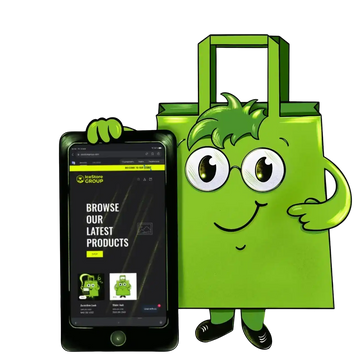In the fast-moving world of eCommerce, customers make purchase decisions in as little as seven seconds—often before they even realize it. Traditional marketing research relies entirely on what people say about their thoughts, which leaves a gap in understanding actual behavior. This explains why up to 95% of new products fail despite extensive focus group testing, and why consumers often buy products they claim they would never choose.
Neuromarketing research shows that Shopify shoppers spend only 2.6 seconds on a product page before deciding to stay or leave. Therefore, image selection, color psychology, and layout optimization play a critical role in conversion. Technologies like fMRI, EEG, eye-tracking, and biometric measurements allow brands to analyze subconscious responses to branding, packaging, and advertising, rather than relying on self-reported opinions.
What is Neuromarketing?
Neuromarketing is the intersection of neuroscience and marketing. It measures physiological and neural signals to better understand decision-making, motivation, and consumer preferences—similar to how a focus group interviewer assesses participant responses. Marketers then use these insights to optimize campaigns, product development, and pricing strategies.
Why neuromarketing is valuable for Shopify businesses:
-
The brain does not lie. You can see which areas of the brain are activated when interacting with your product, rather than relying on verbal feedback.
-
It reduces guesswork in product launches, A/B testing, and marketing campaigns.
-
It helps create products that elicit positive emotional responses, potentially increasing revenue.
However, while the theory is promising, neuroscience is still evolving, and it cannot yet fully decode the exact thoughts of consumers.
How Neuromarketing Works
Neuromarketing starts by evaluating neural activity (through neuroimaging) or physiological tracking (such as eye or facial movements) in response to marketing stimuli. These stimuli can vary from tasting two different soft drinks to listening to two songs, allowing brands to A/B test reactions.
Accessing the specialized equipment and expertise required is often costly. Physiological measurement methods are currently more popular than neural methods, likely due to their lower cost and comparable results.
1. fMRI
Functional Magnetic Resonance Imaging (fMRI) uses strong magnetic fields to track blood flow in the brain over time. It is the most expensive and invasive tool for neuromarketing research but provides deep insights into attention, emotional response, and memorability. Brands can use these insights for pricing, branding, and product optimization. For instance, fMRI has been used to study consumer preferences for soft drinks, providing data unavailable through traditional surveys.
2. EEG
Electroencephalography (EEG) measures brain cell activity using sensors placed on the scalp. While not as precise as fMRI for locating deep brain activity, EEG helps determine attention levels and memory response. Frito-Lay, for example, combined EEG with biometric analysis to find which chip packaging design was most appealing to customers.
3. Eye Tracking
Eye movement analysis provides insights into what draws consumer attention and how they process information. Measuring gaze direction, blink frequency, search patterns, and pupil dilation helps determine responses to marketing stimuli. Coca-Cola uses eye-tracking to optimize product placement, packaging, and in-store displays.
4. Biometrics
Biometric devices monitor skin conductivity, heart rate, and breathing to infer engagement and emotional reactions. Hyundai used EEG and biometric analysis to test a car prototype in 2009, discovering that smooth curves and sleek lines produced a higher pleasure response among participants.
5. Facial Coding
Facial coding interprets microexpressions to predict emotional responses. Disney, for example, can anticipate audience reactions to a film by analyzing facial expressions in just ten minutes. This approach allows brands to refine messaging and enhance product appeal.
Criticism and Ethical Considerations
Neuromarketing provides a unique perspective on how consumers make decisions—often at a subconscious level, long before they even realize their choices. However, this raises an ethical dilemma: studying audience preferences to improve products and communications is one thing, but using this data to manipulate behavior is quite another.
Critics also question the practical value of neuromarketing. Many insights obtained through expensive technologies like fMRI or EEG could often be achieved through simpler, more accessible methods such as focus groups or surveys. The accuracy of neuromarketing tools remains debated: brain activity does not always directly reflect specific thoughts or emotions, and the interpretation of signals can vary widely between individuals and even for the same person at different times.
Nevertheless, neuromarketing remains a valuable tool for eCommerce. Shopify and Shopify Plus store owners can leverage these insights to improve page design, product visuals, communications, and user experience—while maintaining ethical standards and customer trust. In this way, neuromarketing uncovers aspects of consumer behavior that traditional methods cannot, and, when applied wisely, can contribute to meaningful business growth.
Why IceStoreGroup
At IceStoreGroup, we combine eCommerce expertise with technology to help Shopify and Shopify Plus stores optimize conversion and scale efficiently.
Our clients receive:
1. Custom solutions tailored to specific goals
2. Flexible approach and fast implementation
3. Full support from store creation to scaling
4. Deep expertise in Shopify and Shopify Plus
Let’s build something great together
📧 Email: info@icestoregroup.com
🌐 Website: https://icestoregroup.com
📱 Telegram: https://t.me/icestoregroupshopify
🔔 Follow our Telegram channel: https://t.me/icestoregroup
🔥 7-Day Free Trial 🔥
Experience IceStoreLab in action:
✅ Daily reports via Telegram and Email
✅ Competitor change history
✅ AI recommendations and visual reports
See for yourself how data turns into actionable decisions.
👉 Start your free trial now

